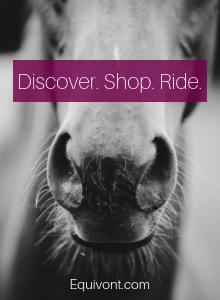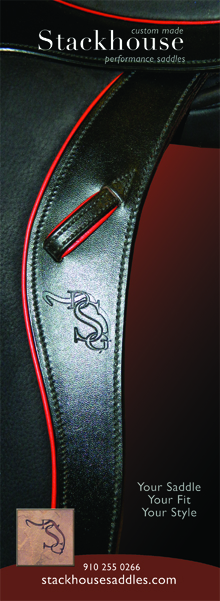Search the Site
Guest Blog Post # 38: "Tammy, Tell Me 'Through'" by Bill Woods
Tammy, Tell Me “Through”
Today’s topic makes some assumptions. For this to be an address-able issue, you have to be at the stage where your horse goes on a steady contact established between your pushing aids and your receiving, elastic elbows. You must be able to have created a round topline, and your horse must be reactive to your leg such that he’ll go forward willingly and you have a reasonable shot at controlling his wither balance (at least laterally and, to a degree, longitudinally).
This is about “throughness.”
I was riding in a clinic with Major Lindgren about fifteen years ago (more recently than I’d care to admit because professionals are supposed to be on top of this stuff ) when the problem came up. I was on a lower level horse I had in training. He was being round and pleasant on a 20-meter circle, but from the sideline Lindgren kept urging, “Make him come through! More than that! More through!”
And I was thinking, “Hmmm, it feels OK to me. What’s he looking for?”
Fifteen years later, I think I know, though—truth be told—probably five or ten years from now, I’ll likely be saying “No, now I know what he was looking for!” And another five years after that. And so on. Our sense of these concepts is supposed to mature over time, right?
The question raised is: how can you tell if your horse is coming through? Aside from what he looks like from the ground, when you’re on him, what are the clues? This morning I was schooling a student’s horse on a circle in sitting trot. I made a half halt from my leg and back to my hand on the same side, and he squiggled in a moment of stiffness, i.e.: he didn’t come through.
Some images came to my mind. The question I asked him was like when you poke a potato with a fork to see if it’s done yet.... Or like when you push a wooden toothpick into a cake layer in the oven to see if it comes out dry or sticky.... When you gently touch the surface of gelatin with a finger to see if it has set.... Or pull carefully on an old rubber band to see if still has some “give” and it won’t just snap.
In other words, you make tests. Only experience will help you discover how big a given test ought to be and what result reasonably you should expect. But the answers you seek from your horse must come from questions you remember to ask.
So do yourself a favor, and when you’re riding, be sure to do the asking! Build yourself a mental rolodex of the replies you get.
Real learning takes place when I, as an instructor, can put my student in a situation where the horse will show her a particular response to the question I have her pose, and I can say to her, “That’s it. That’s the way it should feel to you when Tammy’s coming through!”
Blog by Bill Woods @ http://www.woodsdressage.com






